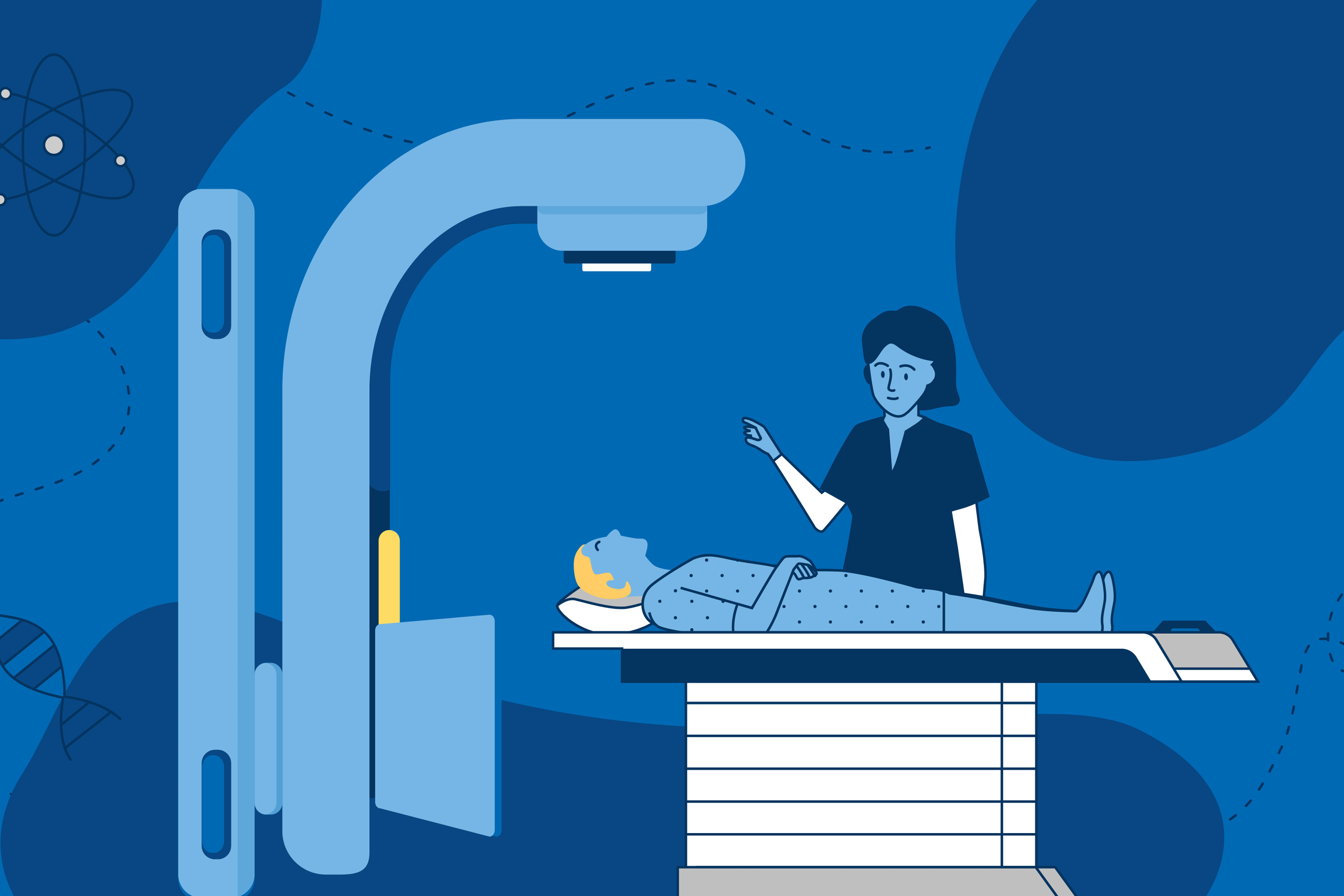What is Radiation Therapy?
Radiation therapy is the delivery of high-energy X-rays to destroy cancer cells. The goal is to target and kill the cancer cells while minimizing damage to the surrounding healthy tissue. Radiation works by damaging the DNA within the cancer cells, which prevents them from growing and dividing. Over time, these damaged cancer cells die off and the body naturally eliminates them.
How Does Radiation Therapy Work?
Radiation therapy for prostate cancer can be delivered in several ways, but the basic principle remains the same: to direct radiation at the prostate to kill cancer cells. The treatment is usually non-invasive, meaning it doesn't involve surgery or cutting into the body. Instead, radiation is delivered from outside the body or placed directly inside the prostate, depending on the type of therapy.
There are two main types of radiation therapy used for prostate cancer:
-
External Beam Radiation Therapy (EBRT): This is the most common form of radiation therapy for prostate cancer. In EBRT, high-energy rays are aimed at the prostate from outside the body using a machine called a linear accelerator. The treatment is typically given five days a week over several weeks. Modern techniques, such as Intensity-Modulated Radiation Therapy (IMRT) and Image-Guided Radiation Therapy (IGRT), allow doctors to precisely target the prostate while sparing nearby healthy tissues, such as the bladder and rectum.
-
Brachytherapy (Internal Radiation): In this type of radiation therapy, small radioactive seeds are implanted directly into the prostate gland. These seeds emit radiation over time, targeting the cancer cells within the prostate. Brachytherapy can be delivered as a permanent implant (low dose rate brachytherapy), where the seeds are left in place and the radiation gradually decreases, or as a temporary implant (high dose rate brachytherapy), where higher doses of radiation are delivered for a short period and then removed.
External Beam Radiation Therapy (EBRT) for prostate cancer can be delivered in various ways, depending on the fractionation schedule, which refers to how the radiation dose is divided over time:
-
Conventionally Fractionated Radiation Therapy: This is the traditional approach where radiation is delivered in small doses, typically five days a week, over seven to nine weeks. Each session, or fraction, gives a lower dose of radiation, allowing healthy tissues time to recover between treatments. This method has been widely used and is well-established for treating prostate cancer.
-
Moderately Hypofractionated Radiation Therapy: In this approach, the total radiation dose is divided into larger fractions, allowing treatment to be completed in a shorter time frame, usually around four to five weeks. The higher doses per session can be as effective as conventional fractionation, with comparable side effects, making it a convenient option for many patients.
-
Stereotactic Body Radiation Therapy (SBRT): SBRT delivers very high doses of radiation in a few sessions, typically five or fewer, over one to two weeks. The precision of SBRT, often with machines such as the CyberKnife, allows for targeted treatment of the prostate with minimal impact on surrounding tissues. SBRT is particularly beneficial for early-stage prostate cancer, offering a shorter treatment duration with excellent outcomes.
Side Effects of Radiation Therapy
While radiation therapy is effective in treating prostate cancer, it can have side effects. These side effects can vary depending on the type and dose of radiation and the individual patient. Common side effects include:
-
Urinary Changes: Radiation may cause some temporary changes in urinary habits, such as needing to urinate more often, feeling a stronger urge to go, or experiencing mild discomfort. In some cases, there may be a slight difficulty in fully emptying the bladder, but these symptoms typically improve over time.
-
Bowel Changes: Radiation can sometimes affect bowel habits or urgency during bowel movements. Some patients may develop a small amount of rectal bleeding, but these effects are usually manageable and tend to resolve on their own.
-
Erectile Function: Radiation can lead to changes in erectile function. However, many men continue to maintain sexual function, and there are effective treatments available if any changes occur.
-
Fatigue: It's common to feel a bit more tired than usual during radiation therapy. This fatigue generally improves after treatment is finished, and most patients find they can continue their normal activities with some minor adjustments.
Most side effects of radiation therapy are temporary and improve over time. However, some side effects, like erectile dysfunction, may be long-term. Theoretically, radiation can also cause another cancer many years down the line, although the risks are low. It's important to discuss potential side effects with your healthcare team before starting treatment so you can make an informed decision about your care.
Conclusion
Radiation therapy is a vital tool in the fight against prostate cancer, offering effective treatment options with the potential for cure or long-term control of the disease. Understanding the basics of how radiation works, the different types of radiation therapy available, and the potential side effects can help patients and their families make informed decisions about their treatment options. As always, it's important to discuss any concerns or questions with your healthcare provider to ensure the best possible outcome for your individual situation.


